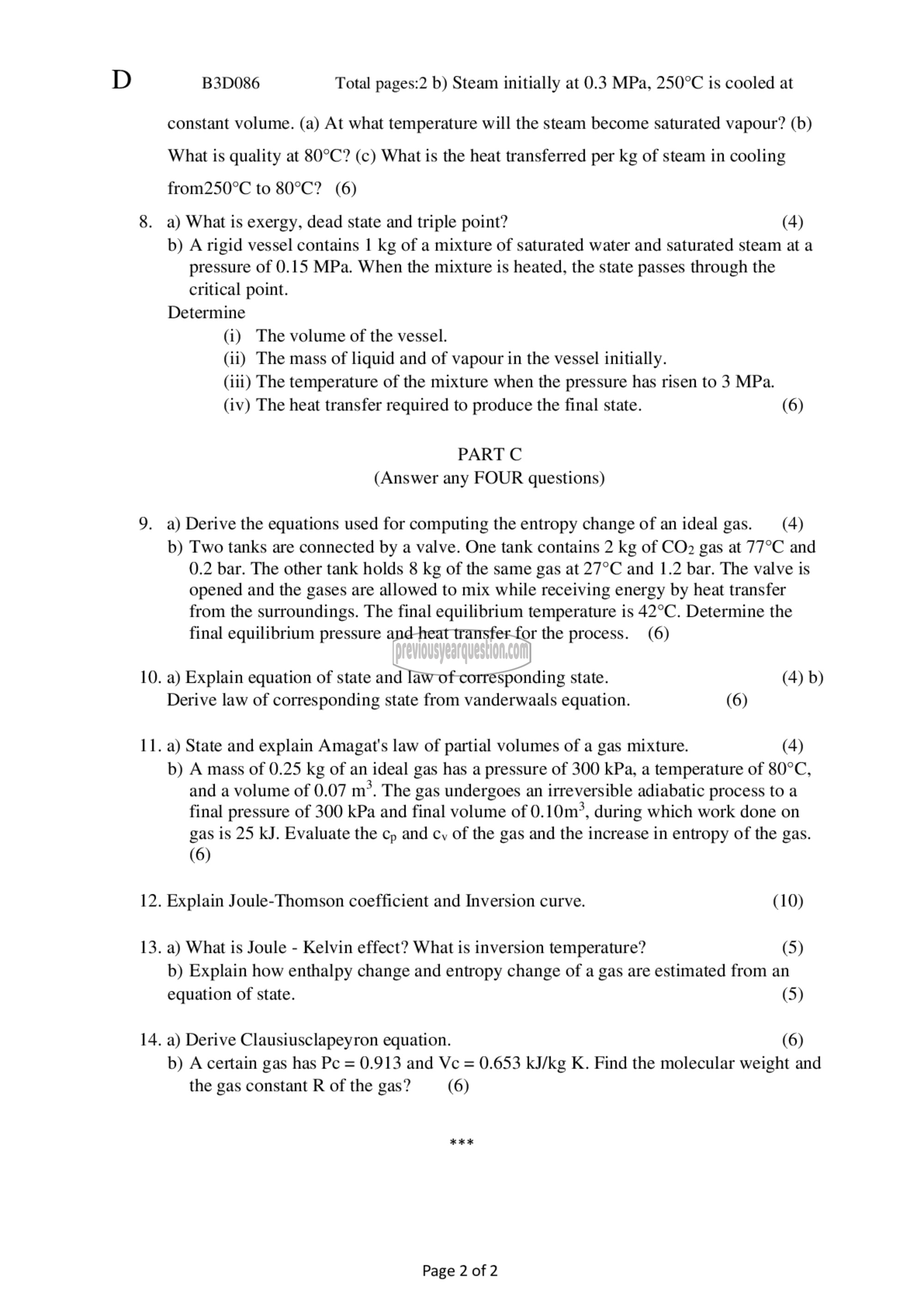APJ ABDUL KALAM TECHNOLOGICAL UNIVERSITY Previous Years Question Paper & Answer
Semester : SEMESTER 3
Subject : Thermodynamics
Year : 2017
Term : JANUARY
Branch : MECHANICAL ENGINEERING
Scheme : 2015 Full Time
Course Code : ME 205
Page:2
D
10.
11.
12.
13.
14.
13310086 Total pages:2 b) Steam initially at 0.3 MPa, 250°C is cooled at
constant volume. (a) At what temperature will the steam become saturated vapour? (b)
What is quality at 80°C? (c) What is the heat transferred per kg of steam in cooling
from250°C to 80°C? (6)
a) What is exergy, dead state and triple point? (4)
b) A rigid vessel contains | kg of a mixture of saturated water and saturated steam at a
pressure of 0.15 MPa. When the mixture is heated, the state passes through the
critical point.
Determine
(i) The volume of the vessel.
(ii) The mass of liquid and of vapour in the vessel initially.
(iii) The temperature of the mixture when the pressure has risen to 3 MPa.
(iv) The heat transfer required to produce the final state. (6)
PART ل
(Answer any FOUR questions)
a) Derive the equations used for computing the entropy change of an ideal gas. (4)
b) Two tanks are connected by a valve. One tank contains 2 kg of റാ gas at 77°C and
0.2 bar. The other tank holds 8 kg of the same gas at 27°C and 1.2 bar. The valve is
opened and the gases are allowed to mix while receiving energy by heat transfer
from the surroundings. The final equilibrium temperature is 42°C. Determine the
final equilibrium pressure and heat transfer for the process. (6)
a) Explain equation of state and law of corresponding state. (4) b)
Derive law of corresponding state from vanderwaals equation. (6)
a) State and explain Amagat's law of partial volumes of a gas mixture. (4)
b) A mass of 0.25 kg of an ideal gas has a pressure of 300 kPa, a temperature of 80°C,
and a volume of 0.07 ന്. The gas undergoes an irreversible adiabatic process to a
final pressure of 300 kPa and final volume of 0.10m?°, during which work done on
gas is 25 kJ. Evaluate the cp and cy of the gas and the increase in entropy of the gas.
(6)
Explain Joule-Thomson coefficient and Inversion curve. (10)
a) What is Joule - Kelvin effect? What is inversion temperature? (5)
b) Explain how enthalpy change and entropy change of a gas are estimated from an
equation of state. (5)
a) Derive Clausiusclapeyron equation. (6)
b) A certain gas has Pc = 0.913 and ۷۰ = 0.653 kJ/kg K. Find the molecular weight and
the gas constant R of the gas? (6)
Page 2 of 2
